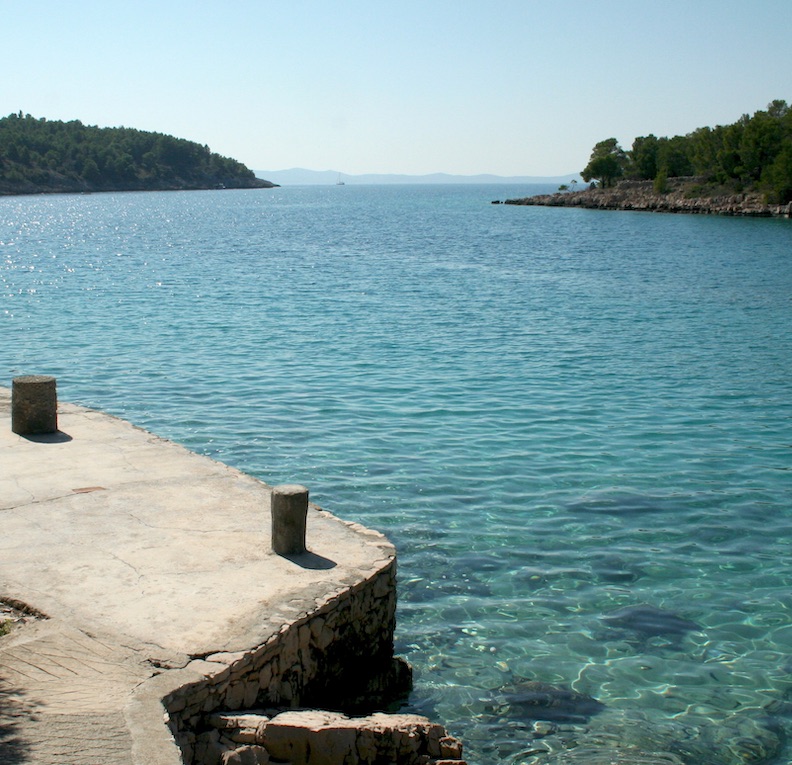The Leiper’s Fork Way
Helping neighbors in need

“Damn,” said Anne, rising from the dinner table.
“What is it?” I said.
“Blue’s out.”
And, sure enough, I looked out the back window and there was Vida Blue greedily grazing in the tall grass of the back pasture, followed by Junebug and Sundown in a row. Blue was supposed to be dry-lotted behind the barn under a strict diet designed to cure a case of laminitis, commonly called “founder.”
To be sure, rich green grass was not part of Blue’s diet. In fact, too much rich grass is what caused the laminitis in the first place. It can become a serious condition if it isn’t stopped. The only real treatment is time away from the grass — months sometimes — and protective shoes. (Blue’s are a fancy light blue in color, so Anne began calling them his Jimmy Choo’s.) The dry lot was also calculated to make Blue to lose weight. And he had plenty to lose.
After supper, Anne and I drove the cart out to the dry lot fence to see how Blue and the others had escaped. The fence was old and decrepit to begin with, so it appeared that Blue — who is the ringleader in most of the horses’ frolics — had leaned heavily against the fence until it broke. Then he stepped over, with Junebug and Sundown following.
Anne and I knew that we could no longer take on a job like repairing a fence, but Anne rustled the remaining wire into a tangle and laid some steel fence posts across it. It didn’t look much like a fence, but we hoped it might be enough of a strange new barrier that the horses would be skittish around it — at least until tomorrow when I could call our neighbor Tommy. Anne went out and caught the horses and led them back into the dry lot and put them in stalls for the night.
The next morning, I found Tommy down at the market and he said he’d come up and look at the damage right away. After a quick examination, he pointed to several weakened boards that needed to be replaced, about 100 feet of it. He said the existing wooden posts were still fine, but that most of the crosspieces and facing boards needed to be replaced and new barbed wire strung along the top. Tommy’s whole business is building large projects of board fences, so he knows what he is talking about, and it never crossed my mind to worry that he might mislead us.
Tommy is a very interesting man. He lives about a mile up the road from us, and we’ve known him for at least 20 years. He’s a big, brawny redheaded fellow with a bright mind that could handle any number of white-collar jobs, but he is a working man by choice. He is proud of his work, paid well, and wouldn’t be happy doing anything else.
Interestingly, he is also a fine singer and songwriter. He has never seriously pitched his songs, but on late nights at Open Mic he can summon up the spirit and voice of Keith Whitley, singing beautiful songs like Lefty Frizzell’s “I Never Go Around Mirrors” or Bob McDill’s “Don’t Close Your Eyes.”
As promised, Tommy showed up the next day with his pal Mitch and wire and boards and went to work. The temperature was 95 degrees and headed higher with a bullet. There was no shade and no breeze. I sat in the cart and watched as the work progressed. Tommy and I hadn’t talked in a while, so we carried on long conversations about friends and relations and events in the past. Sometimes the conversation would veer into the subject of how wealthy new people had changed Leiper’s Fork so drastically. But that was such a dreary narrative, which we both already knew, that we would quickly drop it. The rest of the talking was good, funny, and affectionate, and the hours passed easily.
When Tommy and Mitch were done, we had a beautiful new fence. I figured even Vida Blue would respect it. So the genie was back in the bottle, and we went back to the house and sat on the patio with Anne and drank beer and talked some more.
I had one more difficult task to complete before Tommy left. Tommy and Mitch had worked most of a day in the hottest sun we’ve had all summer. So they were entitled to be paid and paid well. But I didn’t want to insult or embarrass Tommy by asking him for a bill.
Finally, though, I asked him — casually, as though it was just a matter of course — to give me a bill. As I had feared and expected, Tommy declined, and there ensued a brief discussion about whether I should pay him. Tommy was unyielding, and he finally said:
“Look, Wayne, you’re my neighbor. It’s the Leiper’s Fork Way.”
I was stunned. I hadn’t heard those words spoken in years. It brought back a wash of feelings about the way things were done here in the old days. I thought of Bill Givens and me rebuilding a bathroom in Nina Furlow’s house, and of John Heithcock and me going up on Ola Mae Robinson’s roof in the driving rain to find and repair a leak that was pouring water onto her sick bed, and of how 20 men gathered in the Country Boy on the afternoon we heard John Heithcock had been paralyzed by a falling tree to begin making plans for dealing with the tragedy as it unfolded.
We were a community then. And Tommy remembered.
It was the Leiper’s Fork Way.

Copyright (c) 2022 by Wayne Christeson. All rights reserved. Wayne Christeson is a Vanderbilt graduate and a retired attorney who lives with his wife, Anne, on a farm in Leiper’s Fork. He served as Chapter 16’s copy editor from 2009 to 2019. His work has appeared in Vanderbilt Magazine, Nashville Arts, Nashville Scene, and Lost Coast Review, among other publications. He blogs at Letters from Leiper’s Fork.


